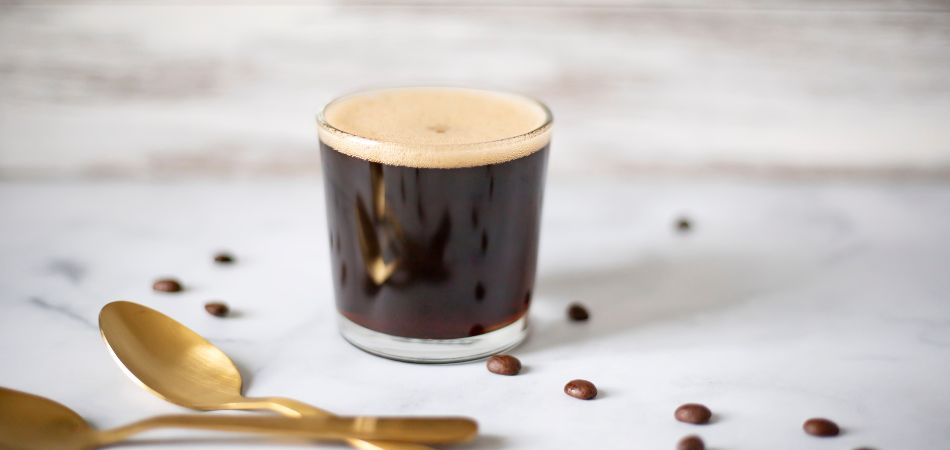How to Make Espresso in Coffee Machine: Simple Steps for a Café-Quality Drink

Imagine this: You walk into your kitchen, press a button on your coffee machine, and in just a few minutes, you’re holding a steaming cup of rich, creamy espresso. The smell fills the room, and with your first sip, you’re transported to your favorite café. Sounds amazing, right?
Espresso is the foundation of many coffee drinks and has earned its place as a beloved coffee staple around the world. Whether you’re craving a simple shot of espresso or dreaming of turning it into a cappuccino or latte, mastering how to make espresso in a coffee machine is a rewarding experience. Making espresso at home not only saves you money but also allows you to create the perfect cup tailored to your tastes.
In this guide, we’ll walk you through every step to help you brew a perfect espresso shot at home, even if you’re a complete beginner. From understanding your espresso machine to troubleshooting common mistakes, we’ve got you covered.
Let’s dive into the world of espresso and learn how to brew like a pro!

What You Need to Make Espresso
Before you start brewing that perfect espresso shot, it’s important to gather the right tools. Making espresso at home requires more than just a coffee machine; you’ll need a few key essentials to ensure that each shot you make is rich and flavorful. Let’s break down the must-haves.
1. The Right Coffee Machine
The heart of any espresso-making process is the machine itself. Choosing the right coffee machine depends on your budget, experience level, and how much control you want over the brewing process. Here are the main types of espresso machines:
| Type of Machine | Description | Best For |
|---|---|---|
| Manual Espresso Machine | Requires hands-on skill to control every aspect of brewing (pressure, timing, etc.). | Experienced coffee enthusiasts looking for full control. |
| Semi-Automatic Espresso Machine | Offers some automation (e.g., pressure and water flow) but still requires manual input for grinding and tamping. | Beginners and intermediate baristas who want more control without the complexity of a manual machine. |
| Fully Automatic Espresso Machine | Fully automated, takes care of all aspects of brewing with just a press of a button. | People who prefer convenience and speed over customization. |
| Capsule Espresso Machine | Uses pre-packaged coffee pods for quick and easy espresso shots. | Absolute beginners or those with limited time who want an espresso without the mess. |
Choosing the right machine will depend on how hands-on you want to be. If you’re looking for ease and convenience, a fully automatic or capsule machine might be the way to go. However, if you’re excited to learn and experiment, a semi-automatic or manual machine will give you more control over the final product.
2. Fresh, High-Quality Coffee Beans
The quality of your espresso shot starts with the beans. Freshness plays a huge role in flavor, so always use high-quality, freshly roasted coffee beans. For espresso, dark roast beans are often preferred due to their rich, bold flavors. However, you can experiment with different blends to find what suits your taste best.
Tips for selecting and storing coffee beans:
- Opt for freshly roasted beans from your local roaster or specialty coffee shop.
- Buy small quantities to ensure freshness, as beans start to lose flavor a week or two after being roasted.
- Store your beans properly in an airtight container in a cool, dark place to prevent them from going stale.
3. Grinder: Burr vs. Blade
The right grinder can make or break your espresso. When it comes to espresso, a burr grinder is a must-have. Burr grinders offer a consistent grind size, which is critical for achieving a balanced espresso extraction.
Why choose a burr grinder?
- Consistent grind size: This helps achieve a uniform extraction, avoiding over or under-extraction.
- Customizable settings: Many burr grinders allow you to adjust the grind size, so you can fine-tune it for espresso.
On the other hand, blade grinders are cheaper but tend to produce unevenly sized coffee grounds, which can negatively affect your espresso.
4. Water Quality
Water makes up about 90% of your espresso, so it’s important to use clean, filtered water. The right water temperature is also crucial for extracting the best flavors from the coffee grounds. Aim for a brewing temperature between 195°F and 205°F. Too hot or too cold, and your espresso will be under or over-extracted, leading to a poor shot.
Water Tips:
- Use filtered water to avoid any unwanted flavors from tap water.
- Keep your water temperature consistent by preheating your machine and portafilter.
5. Other Essentials
While the coffee machine, beans, grinder, and water are the main players, there are a few other items that will help you achieve the perfect espresso shot:
- Tamper: A tamper is used to compress the coffee grounds evenly in the portafilter. Consistent tamping ensures uniform extraction, which is key for a well-balanced espresso.
- Portafilter: The metal basket that holds your coffee grounds. Make sure it’s securely attached to the machine and doesn’t have any cracks.
- Espresso Cups: Pre-warming your espresso cups helps maintain the temperature of your espresso and enhances the drinking experience.
- Cleaning Tools: Regularly clean your coffee machine, portafilter, and grinder to maintain the quality of your espresso.
Now that you’ve gathered all the tools you need, let’s move on to setting up your espresso machine and getting ready to brew. In the next section, we’ll cover the step-by-step process to prepare your machine and coffee grounds for brewing the perfect espresso shot.

Setting Up the Coffee Machine
Now that you have all the essentials, it’s time to get your coffee machine ready for brewing. Proper setup and preparation are key to ensuring a consistent and high-quality espresso shot. Here’s what you need to do:
1. Preheating the Machine
Before you start brewing, it’s important to preheat your espresso machine. A cold machine and portafilter can lead to temperature fluctuations, which affect the quality of the espresso. Preheating ensures that the water stays at the optimal temperature for extraction.
How to preheat:
- Turn on your espresso machine and let it warm up for about 10–15 minutes.
- Run some water through the machine (without any coffee grounds in the portafilter) to warm up the internal components, including the group head and portafilter.
- Preheat your espresso cups by filling them with hot water for a few seconds. This keeps the espresso warm and prevents it from cooling too quickly after brewing.
2. Assembling the Portafilter
The portafilter is where the magic happens—where your coffee grounds will be packed and pressed. It’s important to make sure the portafilter is ready before starting the brew process.
Steps to assemble the portafilter:
- Check the Portafilter: Make sure the portafilter is clean and dry. Any leftover coffee oils or grounds can affect the taste of your espresso.
- Insert the Basket: Place the filter basket inside the portafilter. Choose a basket based on whether you’re brewing a single or double shot of espresso. Double baskets are more common and offer a fuller flavor.
- Lock the Portafilter in Place: Once filled with grounds, securely lock the portafilter into the espresso machine.
3. Checking Water Levels
Before you start brewing, it’s essential to ensure that the water reservoir has enough clean, filtered water. If the water level is low, your machine may not brew properly, or it could overheat.
Check the water level:
- If your machine has a water level indicator, check it before you begin.
- If you’re unsure, always err on the side of filling the reservoir to prevent interruptions during brewing.
- Use filtered water to avoid impurities that can affect both taste and machine longevity.
Once everything is set up, your espresso machine should be ready to brew the perfect shot!
Grinding and Dosing the Coffee
Now that your machine is prepped, it’s time to focus on the coffee grounds. Grinding the right amount of coffee to the right consistency is essential for creating that perfect espresso shot. Here’s how you can get it right:
1. Grinding the Beans
The grind size for espresso is key to achieving the right flavor and consistency. Espresso requires a fine grind—not too coarse, but not powdery either. A burr grinder is highly recommended for achieving uniformity.
How to grind your beans:
- Adjust your burr grinder to the fine setting (about the consistency of table salt).
- Grind only as much coffee as you need. It’s best to grind fresh beans just before brewing to preserve the flavor.
- For a double shot of espresso, aim for 18–20 grams of coffee grounds.
2. Dosing the Coffee
The amount of coffee you use will determine the strength of your espresso shot. A standard double shot typically requires about 18–20 grams of ground coffee. Consistency in dosing is crucial for a balanced brew.
How to dose properly:
- Use a scale for accuracy. Measure out the right amount of coffee grounds for your shot.
- Some espresso machines come with a built-in grinder that doses automatically. If you’re using a separate grinder, simply measure the dose and transfer it to the portafilter.
3. Distributing and Tamping the Coffee
Properly distributing and tamping the coffee grounds ensures even extraction, which is essential for a smooth, balanced shot. Uneven tamping can lead to channels in the coffee puck, resulting in over-extraction in some areas and under-extraction in others.
How to distribute and tamp:
- Distribute: Before tamping, gently shake or tap the portafilter to evenly distribute the coffee grounds.
- Tamp: Using a tamper, apply firm and even pressure to compress the coffee grounds into a smooth, level surface. Aim for a consistent tamp to avoid any air pockets in the grounds.
Remember: consistency is key in both distribution and tamping. Practice will help you get a feel for the right amount of pressure.

Brewing the Perfect Espresso
With the machine prepped and the coffee grounds in place, it’s time to start brewing. This is where the magic happens!
1. Inserting the Portafilter
Once your portafilter is loaded and tamped, it’s time to lock it into the machine. The portafilter should fit snugly into the machine’s group head.
How to insert the portafilter:
- Hold the portafilter by the handle and gently lock it into the group head. You may need to apply a little pressure to ensure a secure fit.
- Make sure it’s positioned correctly to prevent any leaks during brewing.
2. Brewing Process
Now comes the fun part: brewing your espresso shot! Start the machine and monitor the extraction process.
Brewing tips:
- Watch for the flow: The espresso should flow out smoothly and evenly, resembling a steady stream. If it comes out in spurts or drips, your grind may be too coarse, or the tamping may be uneven.
- Extraction time: A well-balanced espresso shot typically takes about 25-30 seconds to brew.
- Look for crema: A good espresso shot will produce a rich, golden crema on top of the liquid. Crema is a sign of proper extraction.
3. Troubleshooting
Sometimes, things don’t go perfectly on the first try, and that’s okay! Here are some common issues and their fixes:
| Problem | Cause | Solution |
|---|---|---|
| Weak or watery espresso | Too coarse grind or under-tamping | Adjust the grind size to be finer and tamp more firmly. |
| Bitter taste | Over-extraction or too fine a grind | Adjust the grind to be coarser or reduce extraction time. |
| No crema | Coffee too old, under-extraction, or uneven tamping | Ensure you’re using fresh coffee, and tamp evenly. |
With the espresso brewed, it’s time to enjoy your creation! In the next section, we’ll dive into how to serve and enjoy your espresso, as well as how to troubleshoot common issues.
Enjoying Your Espresso
After all the hard work of grinding, dosing, tamping, and brewing, it’s finally time to sit back and enjoy the fruits of your labor. But how you serve and enjoy your espresso is just as important as the brewing process itself. Here’s how you can make the most out of your perfect espresso shot.
1. How to Serve Espresso
When it comes to serving espresso, presentation is key! Here’s how to serve it like a pro:
Steps for serving:
- Use the right cup: Serve your espresso in a pre-warmed espresso cup. A classic espresso cup holds about 2 oz (60 mL) of liquid.
- Serve immediately: Espresso is best enjoyed fresh. The crema begins to dissipate quickly, so serve the espresso right after brewing to experience it at its peak flavor and texture.
- Optional add-ins: While some prefer their espresso black, others like to sweeten it with a bit of sugar or enjoy it with a splash of milk. If you’re into lattes, cappuccinos, or macchiatos, your espresso can be the perfect base for these drinks.
2. The Art of Tasting Espresso
Tasting espresso is not just about sipping—it’s an experience that involves assessing the flavor, aroma, and texture. Here are some tips on how to fully appreciate your espresso:
Key characteristics to evaluate:
- Crema: A good crema should be thick, golden, and velvety. It should last for at least a few minutes. Crema contributes to the espresso’s aroma and flavor.
- Flavor Balance: The flavor of espresso should be balanced—neither too bitter nor too acidic. You should be able to taste the sweetness of the coffee, with hints of fruit, chocolate, or caramel depending on the beans used.
- Aftertaste: A well-pulled espresso leaves a lingering, pleasant aftertaste. If it tastes bitter or harsh, this could indicate over-extraction.
3. Pairing Espresso with Food
Espresso pairs beautifully with certain foods, enhancing both the coffee and the food’s flavors. Here are some popular pairings:
- Chocolate: Dark chocolate or chocolate pastries complement the rich flavor of espresso.
- Biscuits and Pastries: A light, buttery pastry, such as a croissant, pairs well with espresso.
- Cheese: Strong cheeses like Parmesan or Pecorino can make an interesting contrast with the bold taste of espresso.
Tips for Perfecting Your Espresso
Making espresso is an art, and like any art, it takes practice. To help you refine your skills and create perfect shots every time, here are some tips and tricks.
1. Consistency is Key
One of the most important factors in making great espresso is consistency. The more consistently you prepare your espresso, the more likely you are to replicate your success with each shot. Here’s how to maintain consistency:
- Use the same grind size each time you brew. Adjust it only if you notice changes in your shot quality.
- Maintain the same tamp pressure to ensure even extraction.
- Measure the amount of coffee using a scale to ensure you’re dosing correctly every time.
2. Adjusting the Grind
Espresso is all about balance, and adjusting your grind size can be the key to fixing common issues like bitter or watery shots.
- Finer grind: If your espresso is too weak or watery, try grinding your coffee a little finer. This will slow down the extraction and increase the strength of the shot.
- Coarser grind: If your espresso tastes too bitter or over-extracted, try a coarser grind to speed up the flow and reduce bitterness.
Remember, a few small adjustments can make a big difference in the flavor of your espresso!
3. Regular Maintenance of Your Espresso Machine
To keep making great espresso, you’ll need to care for your coffee machine. Regular maintenance will ensure that your machine performs at its best and lasts longer. Here’s how to maintain your espresso machine:
- Clean the portafilter and group head after every use to remove any coffee oils that can affect flavor.
- Descale your machine regularly (every 1-3 months) to remove mineral build-up from the water.
- Replace filters in your machine to maintain water quality.
- Check for clogs in the machine’s components, such as the group head or steam wand.
By keeping your machine clean, you’ll not only ensure better-tasting espresso but also extend its lifespan.
Conclusion
Making espresso at home is a rewarding experience, and with the right tools, technique, and a little practice, you can consistently brew espresso shots that rival those of your favorite café. From preheating your machine to perfecting your tamping technique, every step contributes to the final result.
Remember, the joy of making espresso lies in the process. Don’t be afraid to experiment with different beans, grind sizes, or tamp pressures to find the method that works best for you.
FAQ’s
Can you make espresso with a regular coffee machine?
A regular coffee machine isn’t designed to make true espresso, as it lacks the pressure needed for espresso extraction. However, you can make a strong, concentrated coffee using a drip machine by adjusting the grind size and coffee-to-water ratio.
Can all coffee machines make espresso?
Not all coffee machines can make espresso. To brew espresso, you need a machine specifically designed to generate high pressure, such as an espresso machine. Regular drip coffee makers or single-serve machines typically do not have the required pressure to make true espresso.
Can regular coffee be used for espresso?
Regular coffee beans can be used for espresso, but they aren’t ideal. Espresso requires a darker roast with finer ground coffee to create the right flavor and pressure. Using regular coffee might result in a weaker and less flavorful espresso.
Is a coffee shot the same as espresso?
A coffee shot and espresso are often used interchangeably, but they aren’t exactly the same. Espresso is a concentrated coffee brewed under pressure, typically in a machine. A “coffee shot” may refer to a single shot of espresso, or it could mean a serving of brewed coffee, depending on context.







